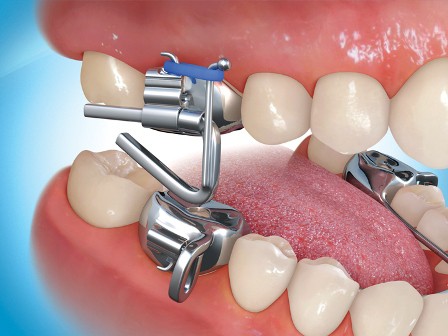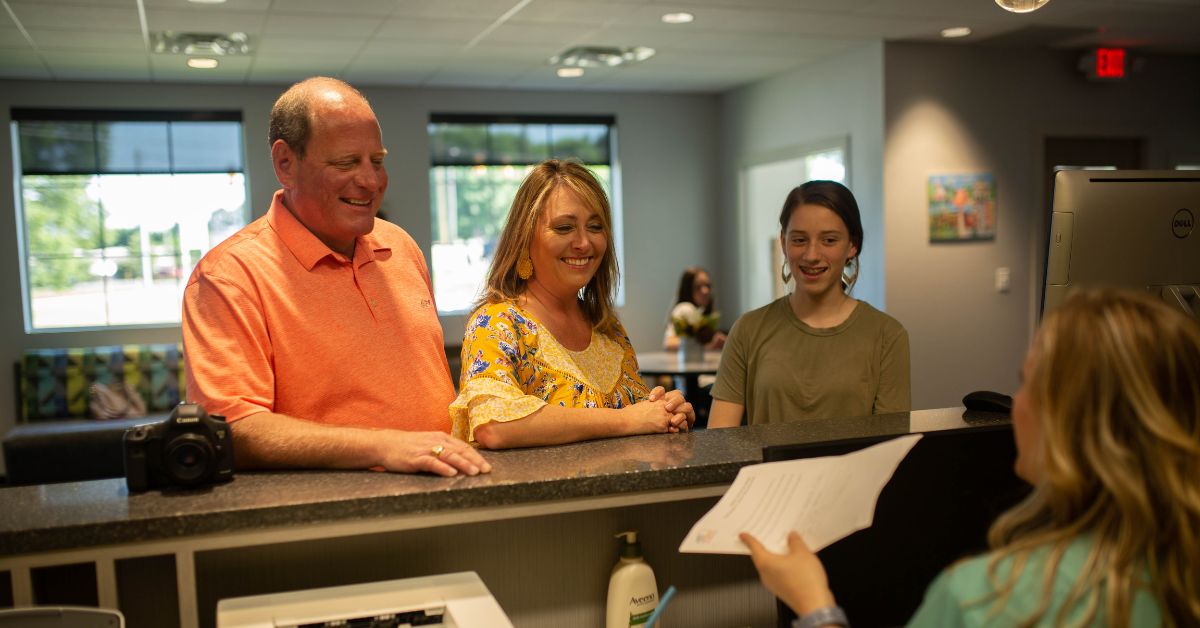Firstly, a small lower jaw is one of the most common problems encountered in new orthodontic patients. This problem can manifest itself as a deep bite, an overbite, or crowding and crooked teeth in either jaw. Oftentimes, these issues will occur because the mouth is narrow, meaning traditional braces alone cannot be effective.
For over 100 years, orthodontists and their patients have been hoping for a non-surgical solution to these problems. However, there are two schools of thought on whether these issues can be corrected without surgery. Some believe that facial and dental features cannot be altered while others believe the opposite. One group claims that facial skeletal structures cannot be changed because they are genetically determined. While the other insists facial and dental abnormalities are caused by both genetic and environmental factors.
Orthodontists who believe that our dental features are determined by our genealogy usually employ the four-bicuspid extraction technique. In this traditional technique, four premolars are often extracted to make room, after which braces are installed to align the teeth. But wouldn’t it be great if there was some non-surgical way to correct small lower jaw issues.
Is there a way to grow the jaw?
Although facial skeletal structures are primarily determined by genetics, environmental factors can contribute to abnormal dental and facial features. As such, not every orthodontist feels that the shape and size of our jaws cannot be altered.
Because abnormal dental growth is not genetically determined, encouraging the affected jaws to grow to the required size might be the solution. A more harmonious shape and position can be achieved if the jaws grow in the right direction. Today, we can use the non-extraction functional appliance technique. In this technique, functional orthodontic appliances are used to widen the mouth. Once the mouth widens and enough space is gained, the teeth can be aligned using braces.
What are functional appliances?
Functional appliances are designed to help enhance the shape and size of the jaw. This can be achieved by encouraging the patient to bite and chew with his/her jaws in an improved position in the hopes that the patient’s body will, in turn, grow his/her jaws in the right direction. Previously used functional appliances include the Frankel, Bionator, and Twin Block, all of which are made of plastic and wire. These removable devices worked by forcing patients to bite into corrected jaw positions. Today, however, orthodontists use fixed functional appliances to encourage proper jaw function. Modern functional appliances include the Herbst, MARA, Myobrace, Forsus Springs, and Jasper Jumpers.
What’s the difference between orthodontic and functional orthodontic treatment?
Orthodontic treatment deals with the alignment of teeth while functional orthodontic treatment helps reshape and reposition both the lower and upper jaws, ensuring a more harmonious position is achieved. As such, functional orthodontic treatment makes it possible to correct crooked, overcrowded teeth without extracting any. Thus, functional orthodontic treatment involves a lot more and is more complicated than orthodontic treatment.
How do functional appliances work?
Functional orthodontic devices are designed to use the teeth in one arch, often the upper jaw, to exert pressure on the teeth in the opposite jaw. In every case, it is hoped that this will encourage the jaws to grow in a manner that’s different from how they would grow naturally.
Orthodontists can use a technique known as cephalometrics to measure the shape, size, and position of a patient’s dental features as well as the skeletal structures of his/her face. When using this accurate technique, an x-ray of the head is used to trace and measure standard dental and facial structures.
Cephalometrics can also be used to determine the effects orthodontic appliances can have on a patient’s mouth during treatment. Orthodontists can compare a tracing that was made before treatment to one made afterward to learn how the correction was achieved. If the patient’s jaws grow, the tracings will indicate that change in size. If there is no jaw growth, the analysis will show that the jaws remained the same in size, in which case only the teeth will have been moved.
Here’s the Kicker
Over the past several decades, a number of university-based cephalometric studies have been conducted. Many of which came to the same conclusion. Most of these studies concluded that almost all types of functional appliances produce changes that are dental in nature, at least primarily. In other words, the jaws will remain almost the same in size and shape while the teeth in both the upper and lower arches will be shifted, allowing them to come together better.
A cephalometric analysis that was performed on same-parent siblings found that they had almost similar underlying skeletal structures. As such, it was concluded that their underlying skeletal structures were mostly inherited. With regard to the shape and size of a person’s jaws, the study suggests that his/her genealogy is the main determining factor. This is believed to be true even if the person’s teeth are arranged differently from those of his/her siblings.
https://www.youtube.com/watch?v=9zE0oNm_pHk&list=PLiAw5GG6jaht7xdiUgWhRahkTaUKW130d
Can functional orthodontic appliances actually grow the jaws?
Patients and some orthodontists assume or believe that functional devices can actually grow the lower jaw. A major contributor to this belief is the fact that overbites do get better when functional appliances are used. If an overbite issue is corrected, then it doesn’t really matter how the functional device used achieved the correction, right? Yes and no.
It won’t matter if the patient has sufficient bone and gum tissue to effectively support his/her teeth in their new position. However, it will matter if the patient has a very short lower jaw. In this case, the patient may not have sufficient bone to support the degree of tipping required to correct the overbite safely.
This is the reason why you need a well-trained orthodontist who has the training and expertise to analyze your tooth position and jaw size. Orthodontic specialists will always perform this analysis before they prescribe functional appliances. This helps to ensure the devices are used in the right patients.
You Might Be Wondering
You can schedule a free consultation with an expert to find out more about functional orthodontic treatment and whether functional appliances are the right solution for your problem. Finally, as professionals, we strive to ensure all our patients get the best care possible. So, feel free to contact us.
Nease and Higginbotham Orthodontics
2455 E. Main Street
Spartanburg, SC 29307
Phone: (864) 579-7700
Can Functional Orthodontic Appliances Really Grow Jaws? [EPIC FACTS]




